The Story of Culture and Arts
- Image resource of Korean history
- Documents from History TextBooks
- Culture & Art Stories from Korean History
- Culture & Art Stories from Korean History - Korean
- National Institute of Korean History
- History net
- About the site
- Introduce
-
Numerous topics related to Korean culture and art are mentioned in middle and high school national history textbooks, but most of them are briefly described by era, making it difficult to understand their concepts, transition processes, and characteristics.
<Culture & Art Stories from Korean History> produces and provides video materials based on expert commentary on the flow, change process, characteristics and characteristics of each major topic in the field of culture and art in Korean history.

Scenario
In olden times, paintings of tigers were thought to protect one from negative energy. Here are two tiger paintings. Both were painted during the Joseon period. But what’s different about them?
This whimsical tiger painting made to ward off evil spirits is a “folk painting.”
Paintings that comically presented one’s desires were popular in their day. Let’s go back to the late Joseon period, the heyday of folk paintings.
Why Were Folk Paintings Trending in the late Joseon Dynasty?
What comes to mind when you think of “typical late Joseon-period paintings”? It may be genre paintings depicting daily life, but you shouldn’t forget the widely popular folk paintings.
Many nouveau riche of the late Joseon period bought the folk paintings as they became trendy as home decor.
Many folk painters copied works by royal painters. Unlike the paintings done by those from the Royal Bureau of Painting, folk paintings were done by unknown artists with no formal education.
Folk paintings were technically unsophisticated but many of them were full of originality that flowed from the frame. Also painting abilities varied from painter to painter.
How were they able to produce multiple copies of a painting in an age without printers? The secret lies in the folk painting process.
Painting methods varied by artist, but step one was always making a basic sketch. A glue coating is then applied over the sketch to keep the ink and paint from bleeding. After that, color gradations are applied. The piece is finished after the outline is retraced.
As long as there was a sketch, the foundation of the painting, multiple copies of it could be made. The folk painting trend allowed not only the upper class but other social classes to enjoy these paintings.
“Why were folk paintings so popular?”
“As the country advanced and personal wealth also grew, people came to think, “Oh, I need a painting for my home, too!” But as you know, they couldn't obtain paintings by royal painters or other famous artists of the day. So, cheaper and lower quality paintings were made, and that became the folk painting style.”
Eom Jaekwon / Folk Art Society of Korea
Folk Paintings Filled with One’s Desires?
There is a street said to have been famous for Joseon folk paintings. Where is it?
At the center of Joseon painting culture, the Royal Bureau of Painting. The Bureau was located near Gwangtonggyo Bridge, possibly the capital’s first bridge. At the end of the 19th century, folk paintings were actively sold at stationary shops and folding screen shops near the bridge.
[A]ll the shops selling prints and paper objects are (on) the same street... With a few seu you can get fantastic figures of dragons, tigers, hippogriffs or ancient warriors to stick on your doors to keep the evil spirits away. [...] which you will find in any Korean house. - Corea e Coreani by Carlos Rossetti, Volume 1, Translated by J.M. Russell, 1904
The reason folk paintings were so popular was not because they were simple decorations, but that they embodied the owner’s desires. Every painting carried a different meaning.
What desire did paintings of lotus flowers carry? Two blooms and leaves from a single root represent a married couple harmoniously growing old together.
Next is a painting of a vigorously jumping carp. The seonbi or literati were often gifted these paintings before taking the civil service exam as they represented the idea that “a fish that jumps vigorously against the current becomes a dragon.”
There are munjado, paintings that combine pictures with text. The eight characters in this painting represent filial piety and morality.
Hyoje chungsin yeui yeomchi (孝悌忠信禮義廉恥)
Respect your parents and love your siblings (Hyoje),
Be loyal to your king and have faith in your neighbor (Chungsin),
Be courteous and faithful, be upright and have a sense of shame (Yeui yeomchi).
Each region enjoyed discovering their own distinct form of munjado.
A perfectly painted bookcase, a chaekgeori, or chaekgado. There was a king who had such an unprecedented love for books, he replaced the traditional throne room painting with that of a chaeokgeori. That king was King Jeongjo.
King Jeongjo ordered the royal painters to paint for him a bookcase, then placed it behind his throne. He told his servants, 'I find great joy in reading, but because of my duties, I have little time to read and memorize [books]... Whenever I gaze upon this painting, my heart is joyful, and that is better than nothing. - Geumneung jip (Collected Works of Geumneung Nam Gongcheol)
To some, chaekgeori was a way to show off one’s wealth. To others, it was a talisman used to bring success. In each tiny corner of these bookcases, you’ll discover their hidden meanings.
Chaekgeori’s popularity began during the Joseon period and continues to this day. They’re so popular, overseas exhibitions of them are even held.
“The reason for folk paintings’ popularity”
“What attracted so many to folk paintings was that they symbolized happiness. Anyone from any station could buy one and put it up in their home. They were like prayers of love, happiness, and the fulfillment of dreams for even the average Joe.”
Chung Byungmo, Professor / Gyeongju University, Dept. of Cultural Assets
Folk paintings, a popular late Joseon style imitating paintings once reserved for the aristocracy. These paintings, filled with personal wishes, offer us a glimpse into the real lives of past Koreans.
[Epilogue]
Must-Know Facts on Culture and Art in Korean History
1. Palace paintings were paintings used in the palace, folk paintings were paintings used for decoration by non-elite members of society.
2. Folk Paintings were not mere decoration but embodied personal desires.
3. King Jeongjo loved books so much he replaced the traditional throne room painting with that of a chaekgeori.
Fine Arts & Crafts
18 films-
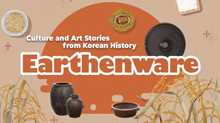 Earthenware08:28
Earthenware08:28 -
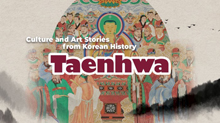 Taenghwa, or Buddhist Paintings in the Joseon Period08:36
Taenghwa, or Buddhist Paintings in the Joseon Period08:36 -
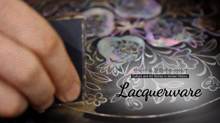 Lacquerware09:04
Lacquerware09:04 -
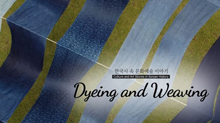 Dyeing and Weaving08:21
Dyeing and Weaving08:21 -
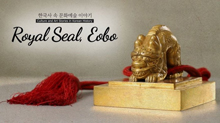 Royal Seal, Eobo07:53
Royal Seal, Eobo07:53 -
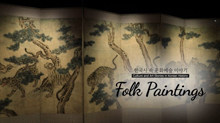 Folk paintings07:49
Folk paintings07:49 -
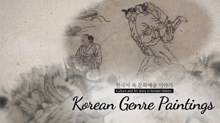 Korean Genre Paintings10:05
Korean Genre Paintings10:05 -
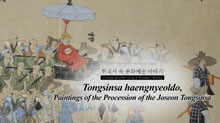 Paintings of the Procession of the Joseon Tongsinsa10:09
Paintings of the Procession of the Joseon Tongsinsa10:09 -
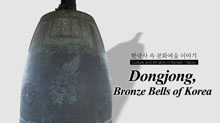 Dongjong, Bronze Bells of Korea08:50
Dongjong, Bronze Bells of Korea08:50 -
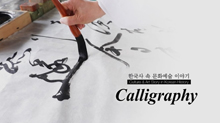 Calligraphy08:32
Calligraphy08:32 -
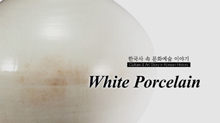 White Porcelain08:18
White Porcelain08:18 -
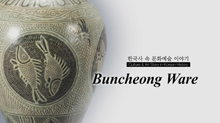 Buncheong Ware07:48
Buncheong Ware07:48 -
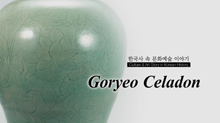 Goryeo Celadon07:54
Goryeo Celadon07:54 -
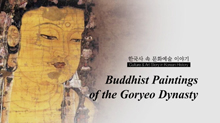 Buddhist Paintings of the Goryeo Dynasty07:57
Buddhist Paintings of the Goryeo Dynasty07:57 -
 Clay Figures, Figurines07:01
Clay Figures, Figurines07:01 -
 Clay Earthenware06:05
Clay Earthenware06:05 -
 Paintings of the Joseon Dynasty08:09
Paintings of the Joseon Dynasty08:09 -
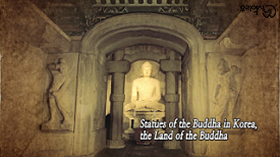 Statues of the Buddha in Korea09:03
Statues of the Buddha in Korea09:03

